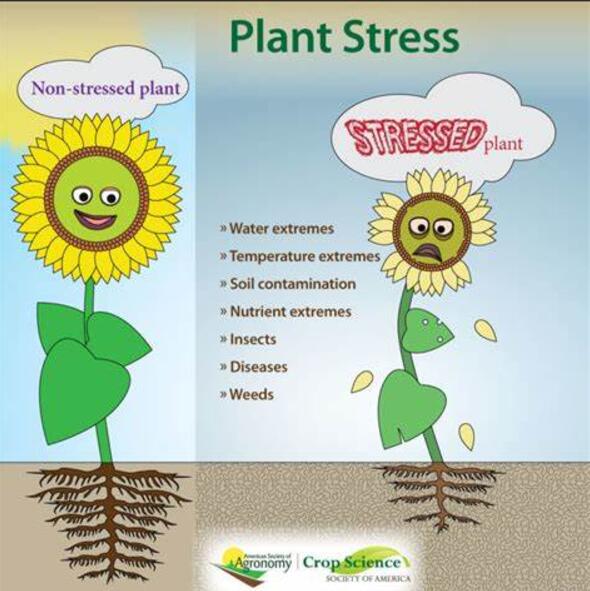Application of SiO2 nanoparticles to address CdS NPs contamination in spinach
IF 6.8
Q1 PLANT SCIENCES
引用次数: 0
Abstract
Rising cadmium (Cd) contamination poses significant threats to crop productivity, quality, and human health. To address this, nano-enabled techniques have recently gained attention for their potential to enhance crop yields and remediate contamination due to heavy metals. This study explores the efficacy of silicon dioxide nanoparticles (SiO2 NPs) in mitigating the effects of cadmium sulfide (CdS) NPs in spinach. Field experiments were conducted growing spinach plants subjected to cultivation with 1 mg/L CdS NPs contamination, with foliar application of SiO2 NPs at concentrations of 1, 20, and 100 mg/L. The phenotypic, biochemical, and metabolic responses of the plants to stress conditions were examined following exposure to CdS and SiO2 for four weeks. The results showed that SiO2 NPs increased the fresh and dry weights of both roots and shoots. Furthermore, CdS NPs exposure reduced chlorophyll content by 66.76 %, whereas SiO₂ NPs co-exposure increased chlorophyll levels by up to 42 % compared to the CdS NPs and control groups. However, elevated malondialdehyde (MDA) levels were observed in leaves for the CdS-only group and roots for all treatments indicating oxidative stress was most pronounced for the CdS case. Results demonstrated that SiO₂ application significantly reduced Cd accumulation in spinach by up to 34.92 %. Also, enhanced mineral accumulations were recorded in both roots and shoots, whereas decreased levels were found in the co-exposure groups, except for Zn. The exposure to SiO2 resulted in upregulation of metabolites including galactonic acid, d-aspartic acid and others, and UDP-d-galactose was downregulated in the group exposed only to CdS NPs. The upregulation of these metabolites by SiO2 NPs demonstrates their mitigating effect against CdS NPs induced stress. This work enhances understanding of phenotypic and metabolic alterations induced in spinach by CdS and SiO2 NPs, and independently and through their co-exposure. Overall, our findings indicate that Cd contamination can be reduced in spinach using SiO2 NPs when applied at low levels, and the mechanisms are discussed.

求助全文
约1分钟内获得全文
求助全文
来源期刊

Plant Stress
PLANT SCIENCES-
CiteScore
5.20
自引率
8.00%
发文量
76
审稿时长
63 days
期刊介绍:
The journal Plant Stress deals with plant (or other photoautotrophs, such as algae, cyanobacteria and lichens) responses to abiotic and biotic stress factors that can result in limited growth and productivity. Such responses can be analyzed and described at a physiological, biochemical and molecular level. Experimental approaches/technologies aiming to improve growth and productivity with a potential for downstream validation under stress conditions will also be considered. Both fundamental and applied research manuscripts are welcome, provided that clear mechanistic hypotheses are made and descriptive approaches are avoided. In addition, high-quality review articles will also be considered, provided they follow a critical approach and stimulate thought for future research avenues.
Plant Stress welcomes high-quality manuscripts related (but not limited) to interactions between plants and:
Lack of water (drought) and excess (flooding),
Salinity stress,
Elevated temperature and/or low temperature (chilling and freezing),
Hypoxia and/or anoxia,
Mineral nutrient excess and/or deficiency,
Heavy metals and/or metalloids,
Plant priming (chemical, biological, physiological, nanomaterial, biostimulant) approaches for improved stress protection,
Viral, phytoplasma, bacterial and fungal plant-pathogen interactions.
The journal welcomes basic and applied research articles, as well as review articles and short communications. All submitted manuscripts will be subject to a thorough peer-reviewing process.
 求助内容:
求助内容: 应助结果提醒方式:
应助结果提醒方式:


